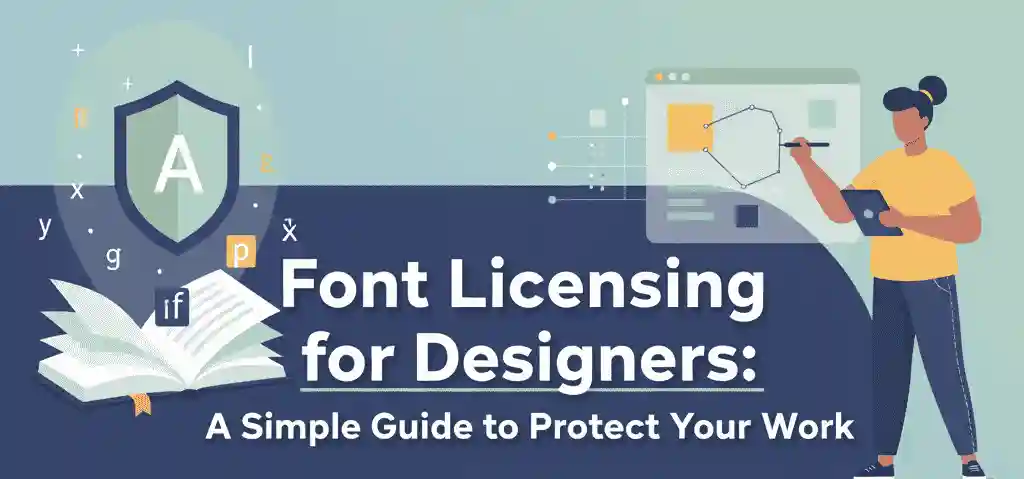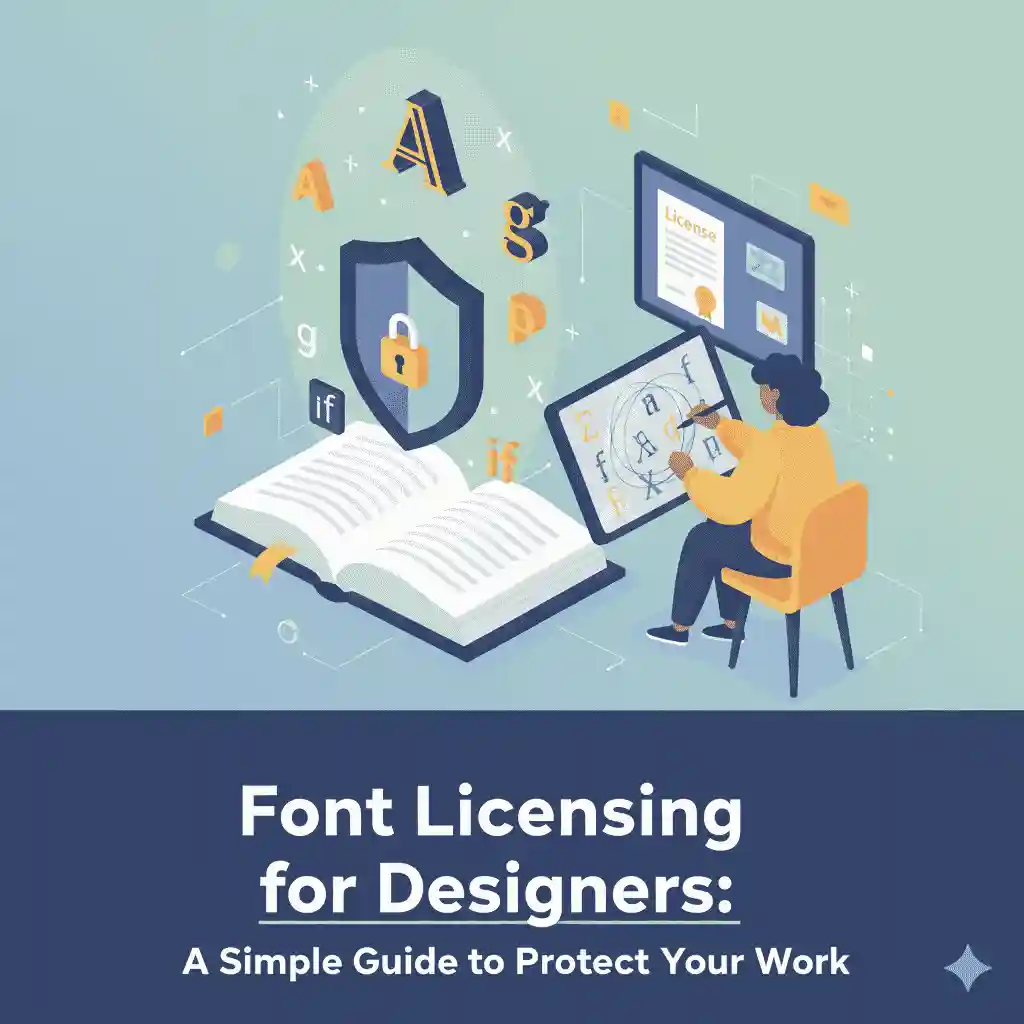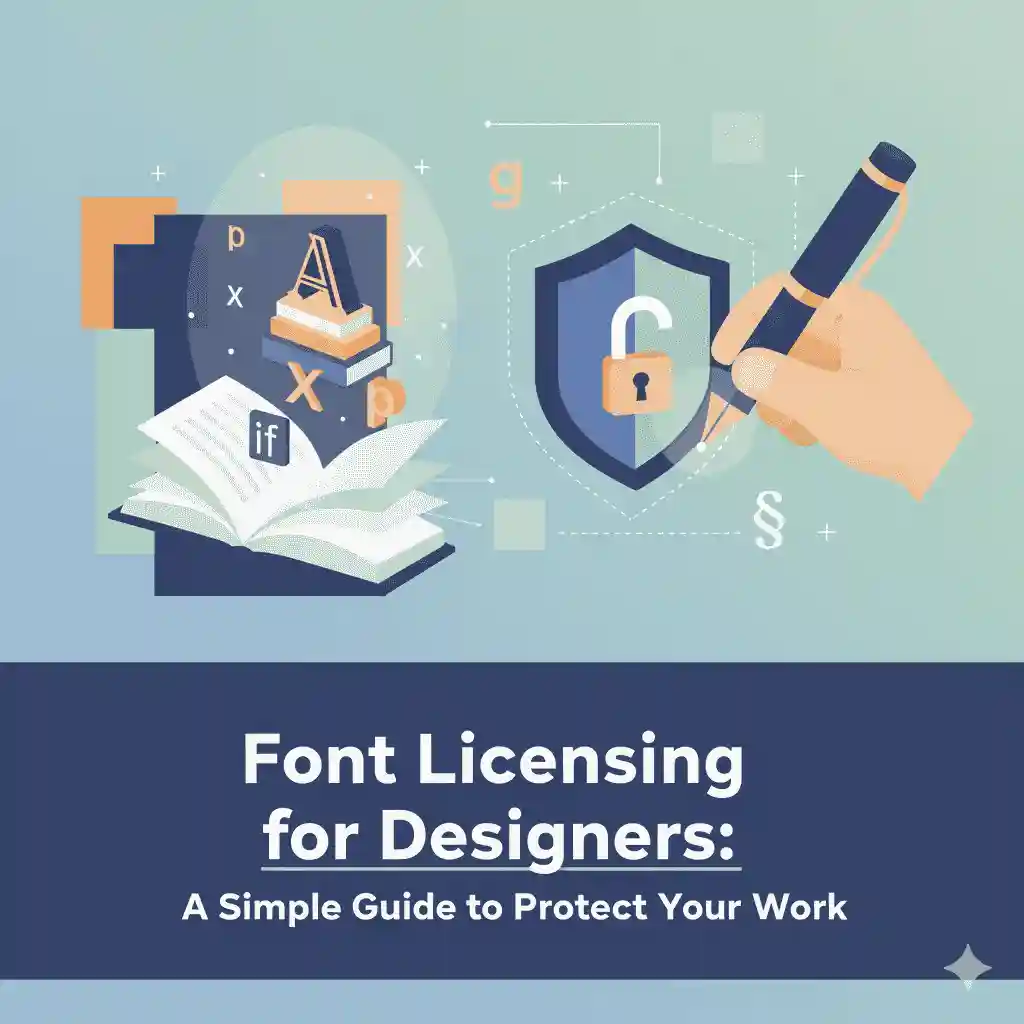Table of Contents
- Introduction
- Why Font Licensing Matters
- Types of Font Licenses (and Their Use Cases)
- Desktop License
- Webfont / Embedded License
- App / Mobile License
- ePub / Publishing / Digital Document License
- Server / SaaS / API License
- Custom & Unlimited Licenses
- Open Font / Free Licenses (OFL, GPL+FE)
- How to Choose the Right License as a Designer
- Best Practices & Common Pitfalls
- Licensing Your Own Fonts: Tips for Foundries & Independent Designers
- Using EULAs
- Versioning, Upgrades & Add-Ons
- License Monitoring & Enforcement
- Example Cases (Linking to Your Fonts)
- Conclusion & Next Steps
- References & Further Reading
1. Introduction

As a designer or type foundry, understanding font licensing for designers isn’t just a legal formality — it’s a core component of your business strategy. A clear, fair license helps protect your intellectual property, sets expectations with users, and can even become a selling point. In this guide, we’ll walk through licensing basics, real-world use cases, and tips to license your own fonts effectively.
2. Why Font Licensing Matters
Fonts are considered software (or at least software-like assets) in many jurisdictions, meaning they are protected by copyright and subject to licensing terms. monotypefonts.com Creative Bloq
If a user installs or embeds your font outside of the permitted usage, that could be a breach of license and subject to takedown requests, fines, or legal action. TypeType®
Moreover, licensing sets boundaries: it tells users where, how many times, and for how long they can use the font. As a font creator, you retain control and revenue potential.
3. Types of Font Licenses (and Their Use Cases)

Here’s a breakdown of common license types that designers will encounter (or offer). Many foundries combine or customize these. Infinum monotype.com monotypefonts.com
Desktop License
This is the most basic license. It allows installing the font on one or more desktop machines and using it to create static graphics, logos, print layouts, or exported files (PDFs, PNGs, etc.).
Often, the license is limited by the number of “seats” (computers / users). monotypefonts.com Creative Bloq
Webfont / Embedded License
This license covers embedding the font into websites, typically via @font-face CSS, or hosted via font services. Pricing is often tied to monthly pageviews. TypeType® Creative Bloq
Note: You generally cannot use a desktop license to embed a font on a website. TypeType® monotype.com Creative Bloq
App / Mobile License
If you embed your font into a mobile app or desktop software, that often requires its own license. The licensing terms may limit the number of users, downloads, or devices. TypeType® monotypefonts.com
ePub / Publishing / Digital Document License
This covers embedding fonts in eBooks, interactive documents, or digital publications (e.g. ePub, PDF with embedding). Some licenses restrict embedding, while others permit it under certain conditions. TypeType® monotypefonts.com Pusat Bantuan Adobe
Server / SaaS / API License
When the font is run on a server (e.g. used for dynamic image generation, print servers, or web-to-print platforms), you typically need a server or API license. This often takes into account usage metrics like the number of requests, users, or output volume. monotype.com TypeType®
Custom & Unlimited Licenses
Some clients may demand broad or custom usage (e.g. global campaigns, legacy use, multi-format embedding). You may offer custom license agreements or “unlimited” use under specific terms. TypeType®
Open Font / Free Licenses (OFL, GPL+FE)
Open licenses like the SIL Open Font License (OFL) allow embedding, modifications, and redistribution under certain conditions (e.g. preserve the same license, no selling standalone fonts). Wikipedia Creative Bloq
The GPL + Font Exception is another model that permits embedding in documents without forcing the entire document to adopt GPL. Wikipedia
These open models are attractive to designers and developers, but as a foundry you must carefully consider how open you want your licensing to be.
4. How to Choose the Right License as a Designer

When selecting a license for your usage (or advising clients), ask the following:
- What is the usage context? Static graphic? Website embedding? Software?
- How many users/devices? Will multiple designers or machines need access?
- What is the expected scale? E.g. for webfonts, how many monthly pageviews?
- Will the design need updates or modifications? Some licenses restrict font file changes.
- Is the license perpetual or subscription-based?
- Do you need redistribution rights? (usually “no” for commercial licensed fonts)
- Does the client require a broader license later? Preemptively planning for upgrades helps avoid friction.
Always read the EULA carefully. Many designers run into trouble by assuming “desktop means web” or by sending the raw .otf/.ttf to clients when their license doesn’t permit redistribution. crowdspring Creative Bloq
5. Best Practices & Common Pitfalls
- Never send the font file to clients by default. Unless the license explicitly allows redistribution, clients must acquire their own license. crowdspring
- Convert logos or typographic artwork to outlines before delivering to clients so they won’t need the font file. crowdspring
- Be transparent about license tiers and upgrade paths. Clear upgrade options reduce friction.
- Track license usage. If you issue seat-limited licenses, keep a record of who has what.
- Enforce compliance but be flexible. Most of the time, a friendly license upgrade request is enough before legal action.
- Versioning and backward compatibility. If you release a new version of a font, clarify whether existing license holders get it free or pay for updates.
- Consider geographic or language variants in licensing if your font supports many scripts.
6. Licensing Your Own Fonts: Tips for Foundries & Independent Designers
Now, from the perspective of EdricStudio, here’s how you can structure and market your font licensing:
Using EULAs & Template Licenses
Create clear EULA templates for your common license types (desktop, web, app). Use accessible language and avoid ambiguity. Offer a license comparison table on your font product pages.
Versioning, Upgrades & Add-ons
You might offer a base license (e.g. desktop for one seat) and optional add-ons (extra seats, web embedding, app use). Clearly present upgrade paths (e.g. “upgrade to web license + $X”) so users aren’t stuck.
License Monitoring & Enforcement
You can embed an identifier or hidden metadata in your font files to help track unauthorized use. You may also monitor large sites or usage via web analytics or font usage scans. Be ready with a politely worded compliance request or takedown.
Example Cases (Linking to Your Fonts)
Here’s how you might reference your own products in the article:
- Suppose Ekstra Ordinary Font is a modern calligraphy font available on your site. On its product page, you can offer “Desktop License (single seat)” plus “Webfont License (up to 100k pageviews)”.
- Or imagine a bundle: Various Font Package (75 fonts) — in that case, your licensing options might include a volume discount and tiered use rights.
- You may also reference your foundry tool or software: e.g. FontCreator 12 Professional Edition (if relevant) as a tool one might use to generate or hint font files, though licensing remains separate.
By embedding contextual links to your own font products, readers can see real examples of licensing you offer, which helps with conversion.
7. Conclusion & Next Steps
Understanding font licensing for designers is essential both for users and creators of fonts. As a designer, never assume blanket rights — always read the EULA and match license types to your use case. As a font creator, structure your licenses clearly, offer upgrade flexibility, monitor usage, and provide excellent customer support.
If you’re interested in customizing license terms, want a license audit, or want help presenting licenses for your font products, let me know — I’d be happy to assist.
8. References & Further Reading
- Monotype – Font Licensing Explained for Designers & Brands monotype.com
- Monotype – Complete Guide to Font Licensing monotypefonts.com
- TypeType – Font Licensing: Complete Guide TypeType®
- Creative Bloq – A Complete Guide to Font Licensing for Designers Creative Bloq
- Adobe – Font Licensing (Adobe help) Pusat Bantuan Adobe
- Infinum – Font Licensing Guidelines (Design Handbook) Infinum
- CrowdSpring – The Law on Fonts & Typefaces in Design & Marketing crowdspring
- SIL Open Font License – Wikipedia (for open font license) Wikipedia